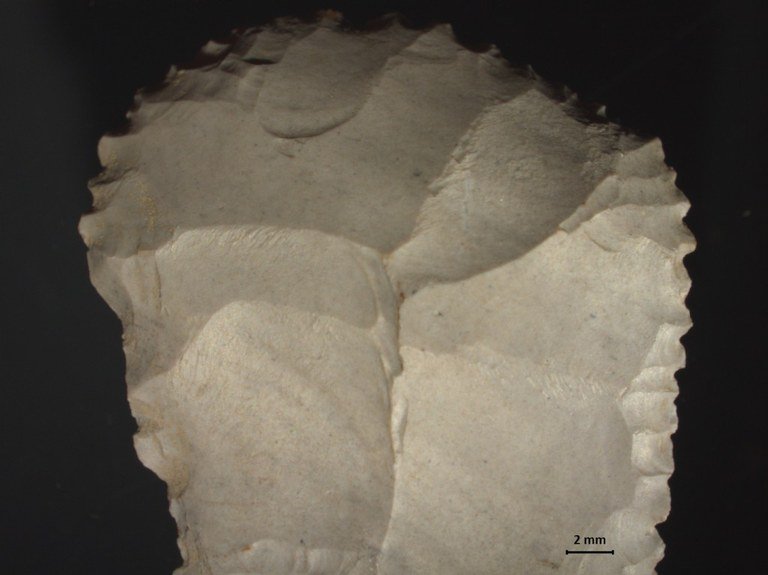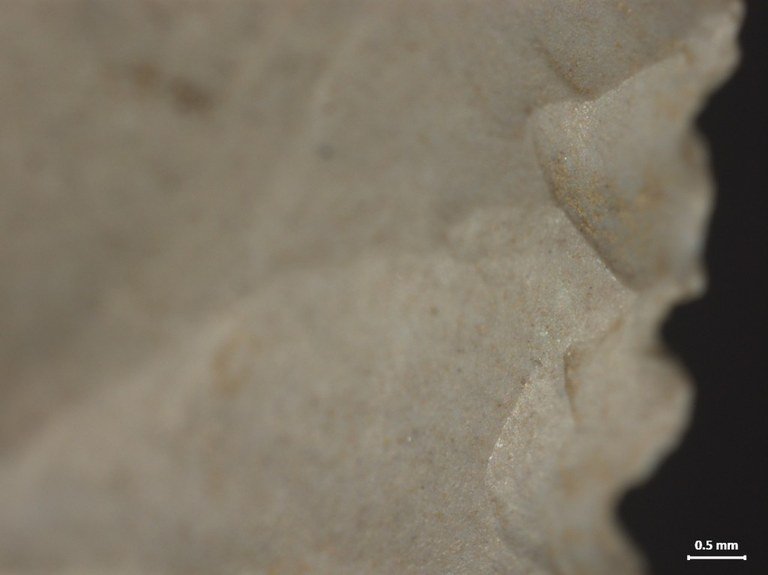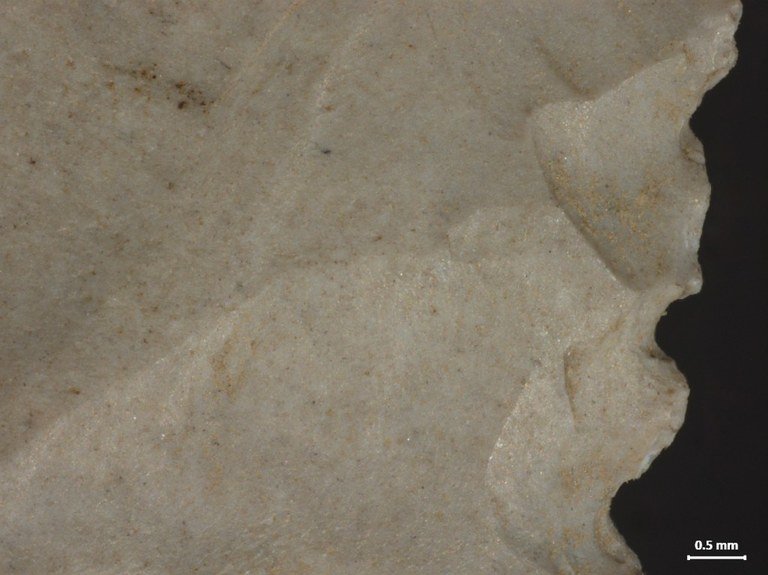Artifact Imaging - Z-Stacking A Scraper
Part of our work at SA McMaster is to explore artifact material and manufacture technique using our Zeiss AxioZoom high resolution microscope. Occasionally we will be posting photographs to highlight a range of artifacts and the imaging techniques we use to capture them in detail.
Aug 04, 2015
Part of our work at SA McMaster is to explore artifact material and manufacture technique using our Zeiss AxioZoom high resolution microscope. Occasionally we will be posting photographs to highlight a range of artifacts and the imaging techniques we use to capture them in detail.
First up, we have a scraper from the Sealey Site. Polarized light filters show the detail of the serrated edges in the first image, but at increased magnification only part of the edge is in focus at once .


To remedy this, we use the microscope’s computer to focus on and digitally mark the highest and lowest surfaces of the artifact that are visible. Once the limits are marked, we set the microscope’s camera to take images at various stages between the high and low points and then stitch together the best pixels from each stage. The result is an image that captures the artifact at both high resolution and high magnification.

This image of the scraper edge is a combination of 42 separate images in one.
Z-stacking is our most commonly used microscope application as it is ideal for capturing artifact features with depth, such as ceramic decoration or the working edges of lithics, so you will see many examples posted here in the future.
Article originally posted by Emily Meikle, 20150804